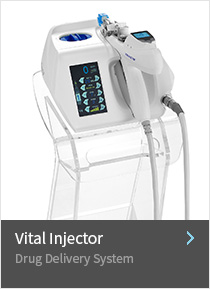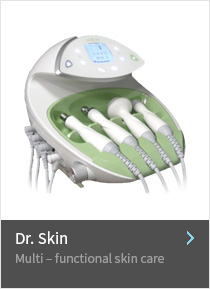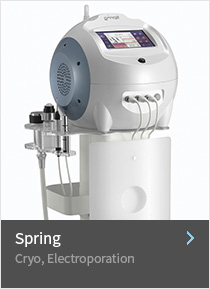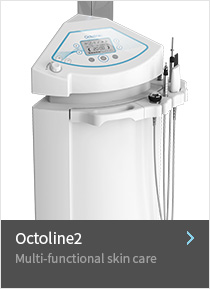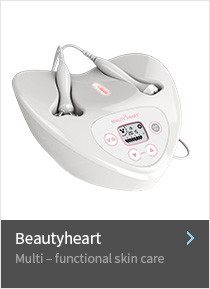Drug delivery treatment
Basic principle : Stratum corneum Structure
The skin, the most accessible organ of the body with a large surface area, offers an appealing alternative for delivering proteins into the systemic circulation. However, stratum corneum, the outermost barrier of skin which is made up of dead keratinocytes, acts as a rate limiting barrier. This lipophilic layer allows only small, potent and moderately lipophilic molecules to partition across it passively, into the deeper layers of the skin. This limits the delivery of proteins which have a large molecular weight and are hydrophilic in nature. So the key for delivering proteins is to overcome this barrier after which the proteins can diffuse past the viable epidermis which is comparatively more hydrophilic in nature and into the systemic circulation via the capillaries present in the dermis. (Kalluri et al., 2011)
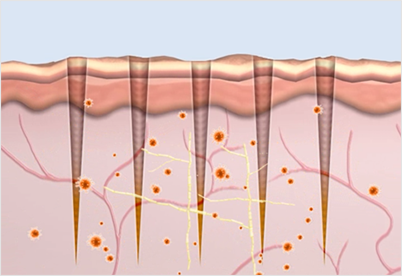
How does it work
1) Iontophoresis
Iontophoresis is a method that infiltrates active substances with polarity, such as Ion, into the skin by using electrical polarity. When the electrode with the same polarity gets in contact with the skin after applying Active substances with polarity into the skin, active substances may infiltrate into the skin due to the pushing forces between electrodes. For the Iontophoresis, a very small amount of currents under 0.5 mA/cm2 per skin surface is generally used.
Reference: Kalluri H, Banga AK. Transdermal delivery of proteins. AAPS PharmSciTech. 2011 Mar;12(1):431-41.
2) Electroporation
Electroporation is a typical method that may infiltrate active substances, of large molecular weight into the skin, without polarity. When applying a short yet strong electric pulse into the skin surface or the cell membrane, momentary pores are created and active substances start to infiltrate. Since pores return to its original state after eliminating the electric pulse, it may infiltrate active substances without any side effects.
Reference: Kalluri H, Banga AK. Transdermal delivery of proteins. AAPS PharmSciTech. 2011 Mar;12(1):431-41.
3) Mesotherapy
Mesotherapy (from Greek mesos, ‘‘middle,’’ and therapeia, ‘‘to treat medically’’) is a nonsurgical cosmetic medicine Treatment. It is a minimally invasive technique that consists of the intra- or subcutaneous injection of variable mixtures of natural plant extracts, homeopathic agents, pharmaceuticals, vitamins, and other bioactive substances in microscopic quantities through multiple dermal punctures. Mesotherapy involves multiple intradermal or subcutaneous injections of a mixture of compounds in minute doses, using very fine gauge needles, to treat medical (mainly local) and cosmetic conditions.
Reference: Atiyeh BS, Ibrahim AE, Dibo SA. Cosmetic mesotherapy: between scientific evidence, science fiction, and lucrative business. Aesthetic Plast Surg. 2008 Nov;32(6):842-9.

